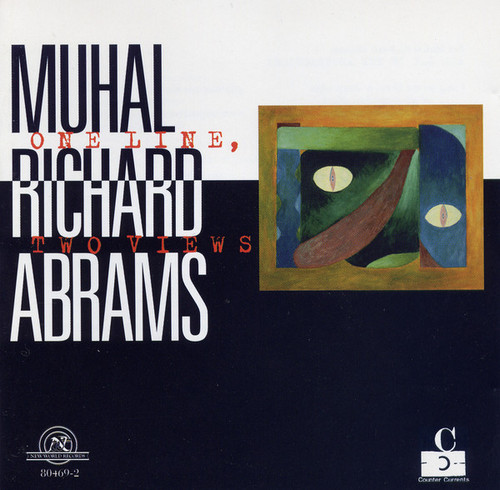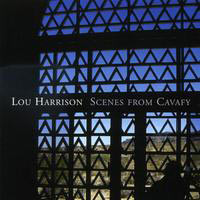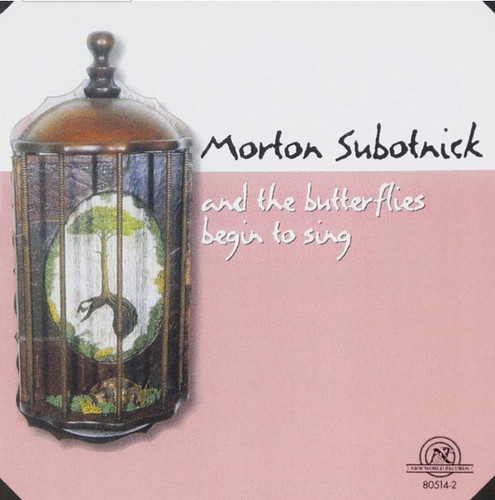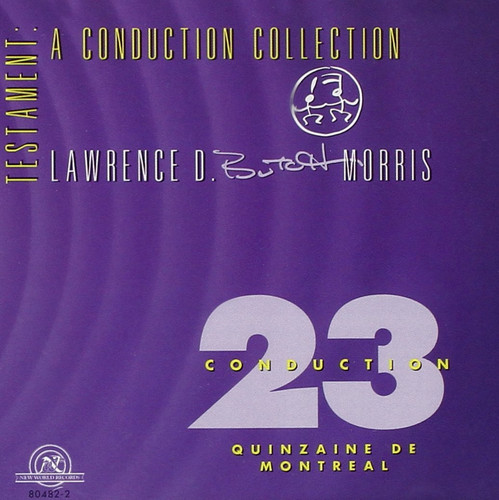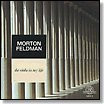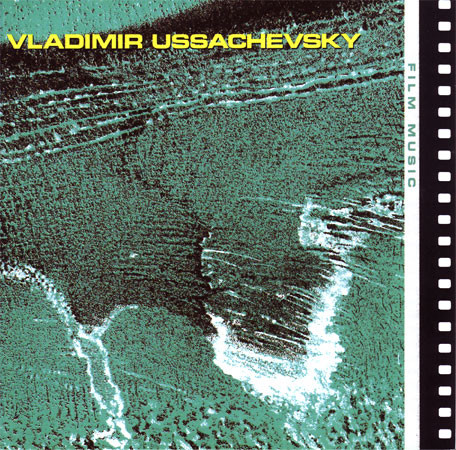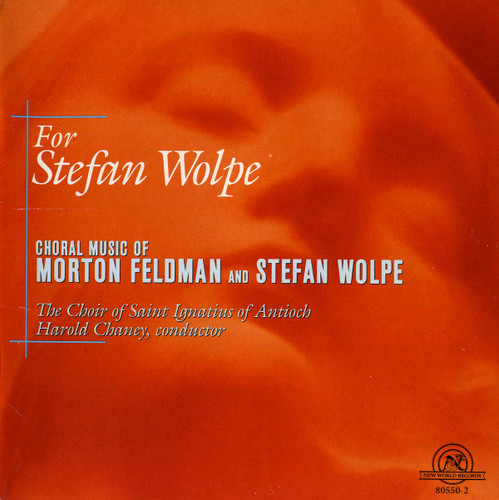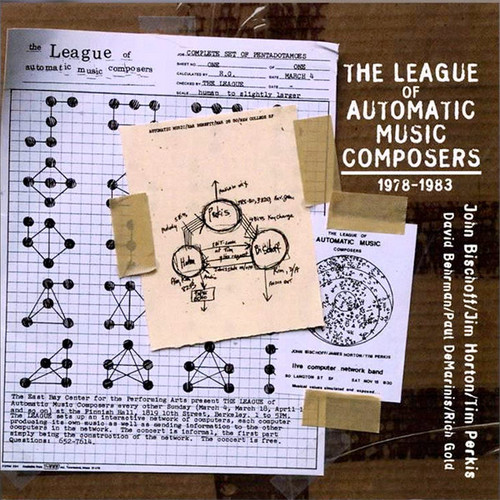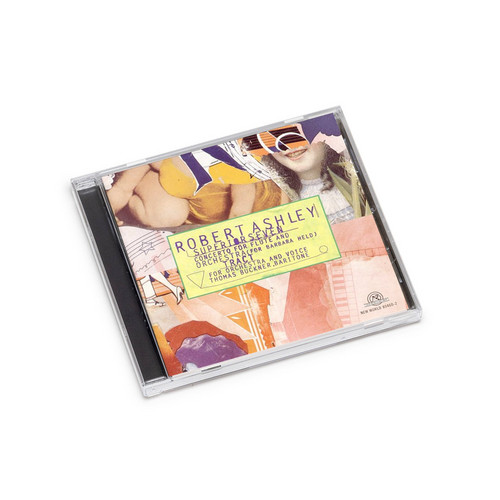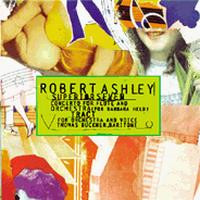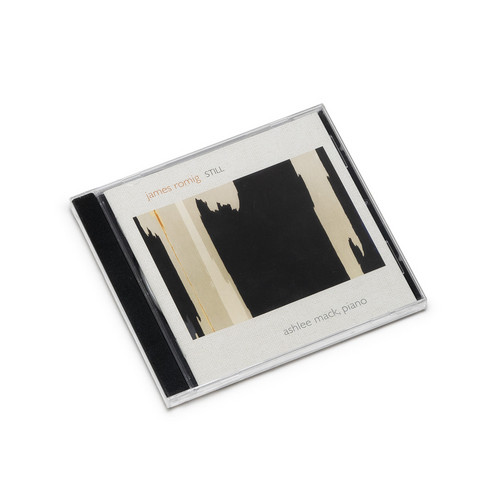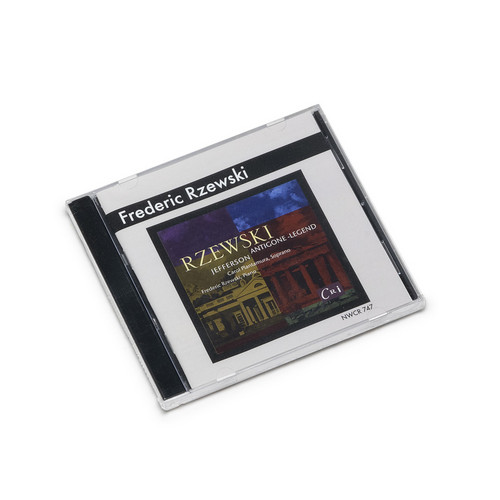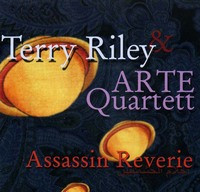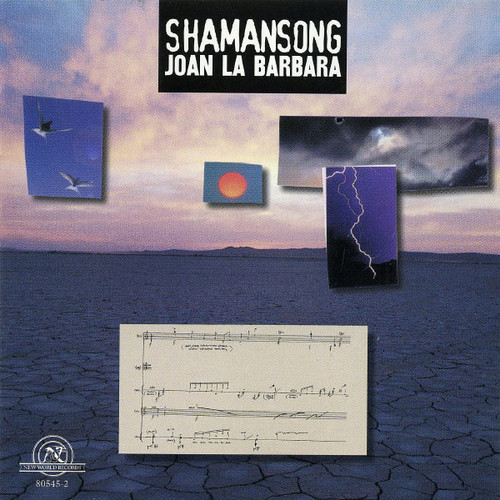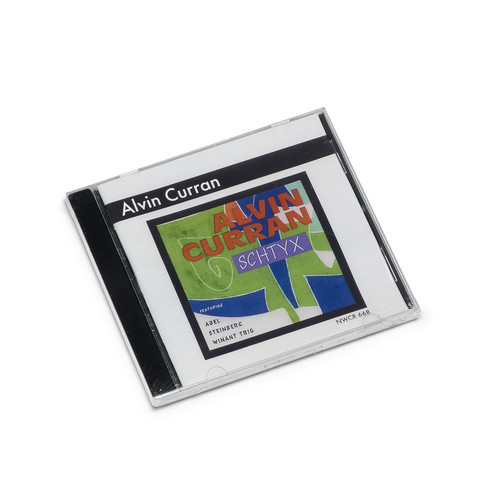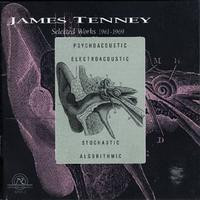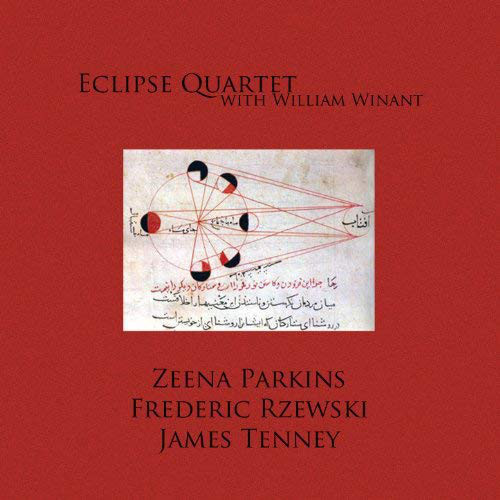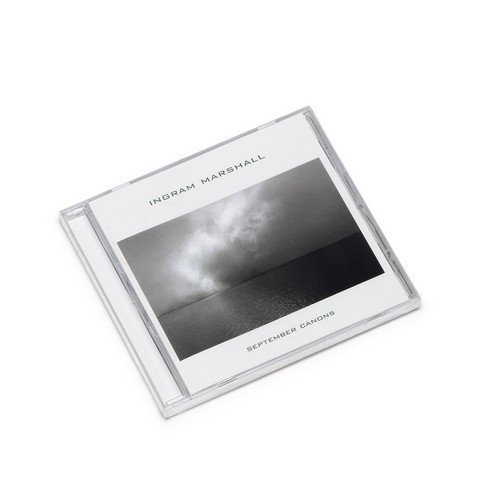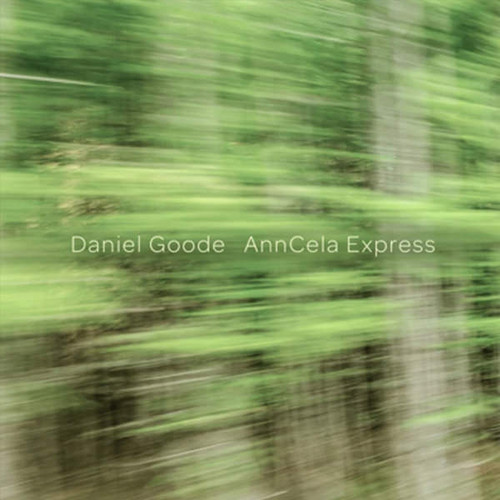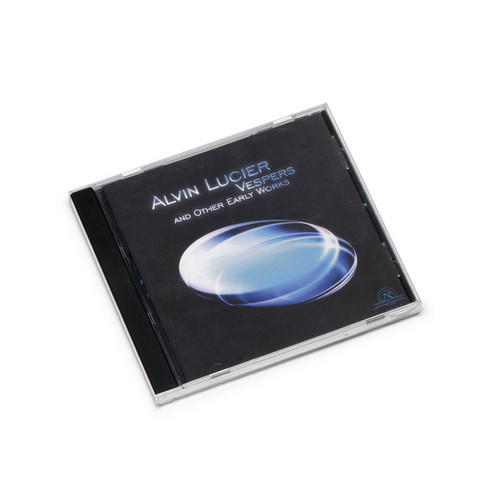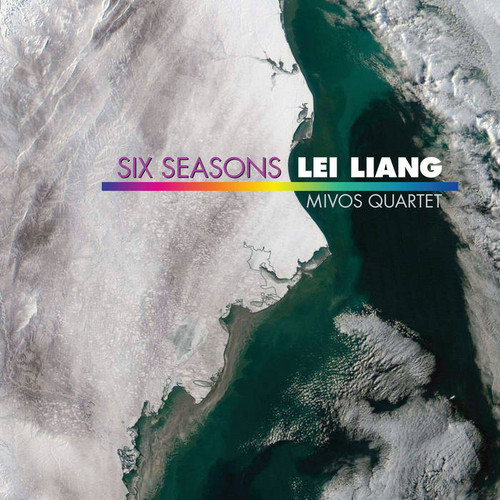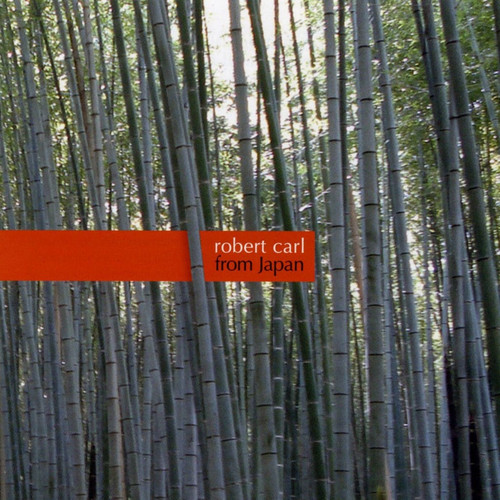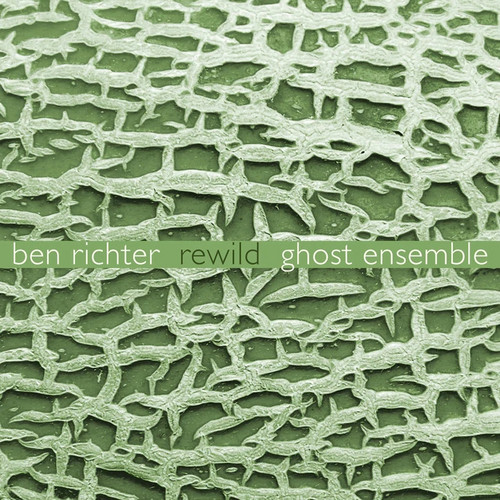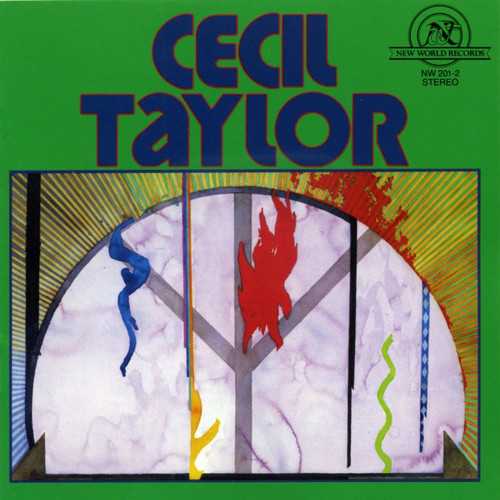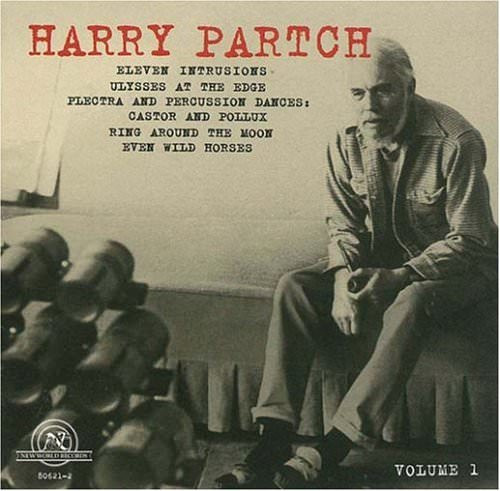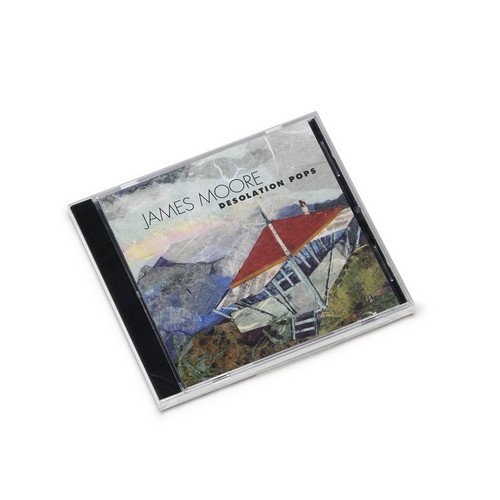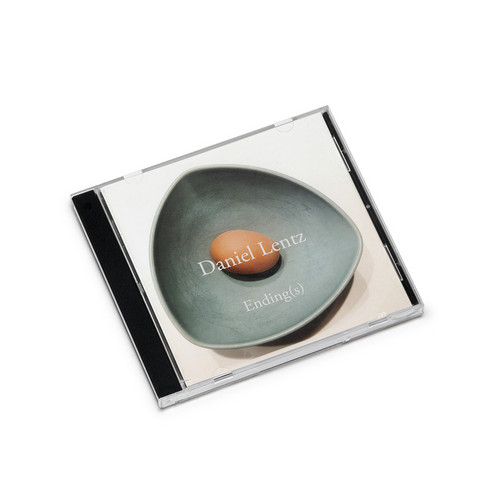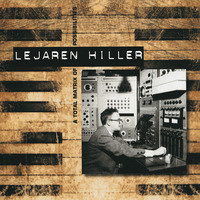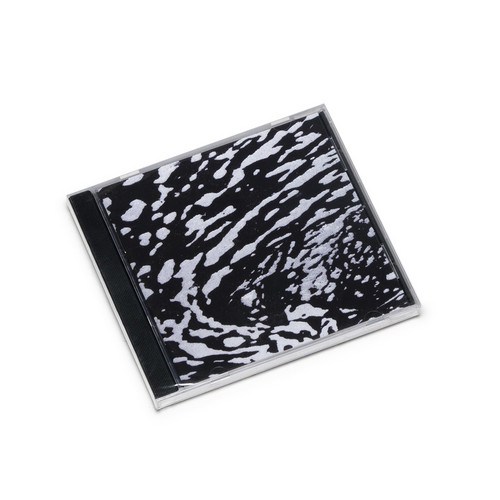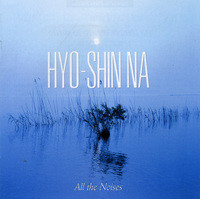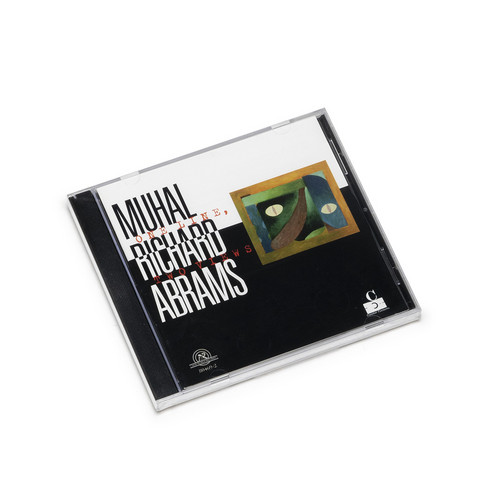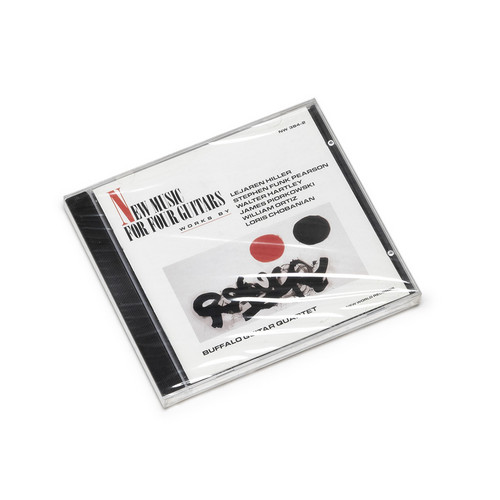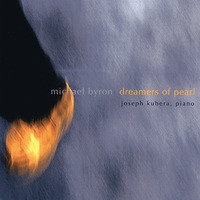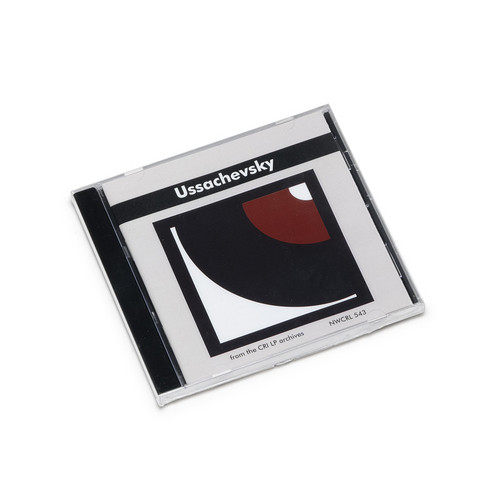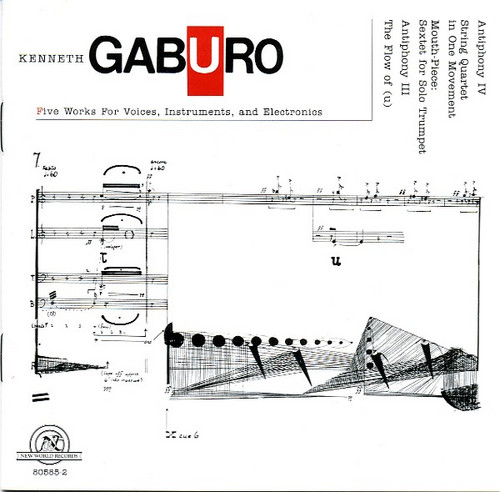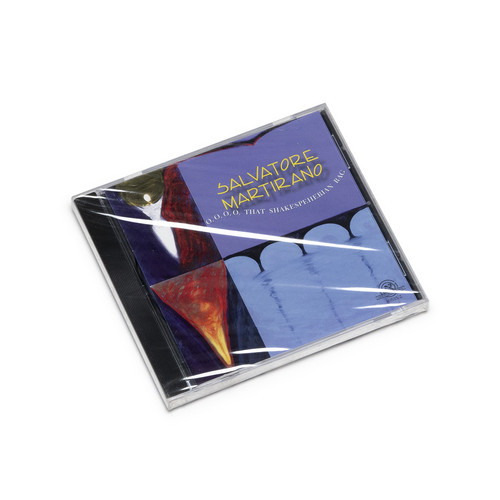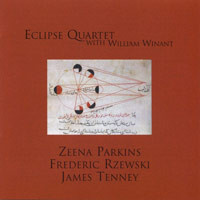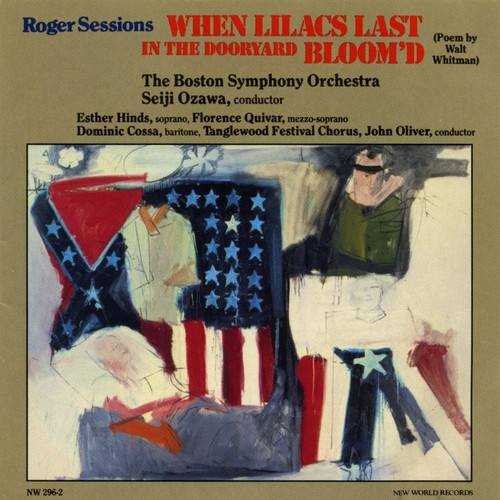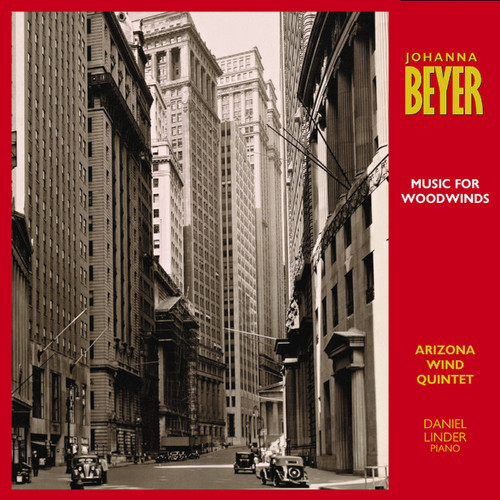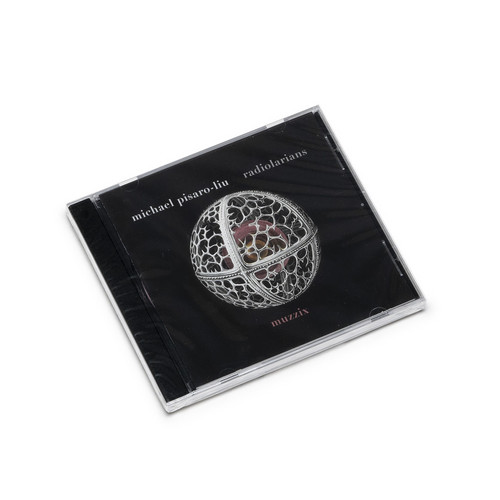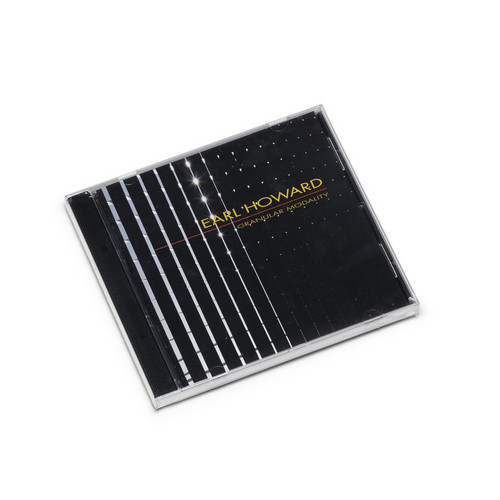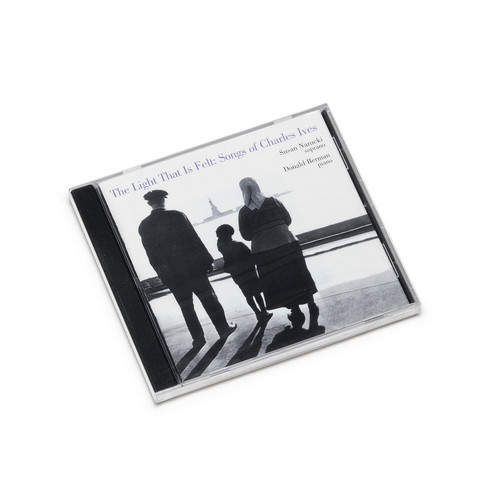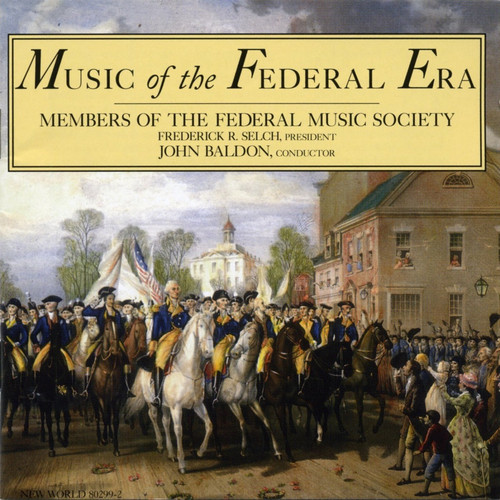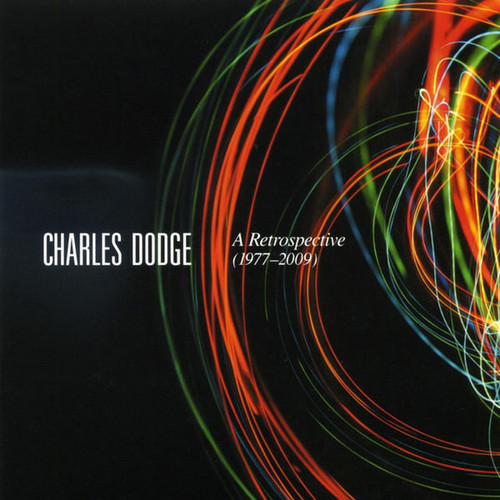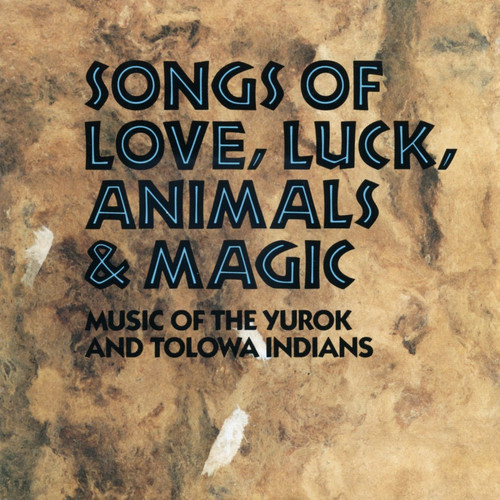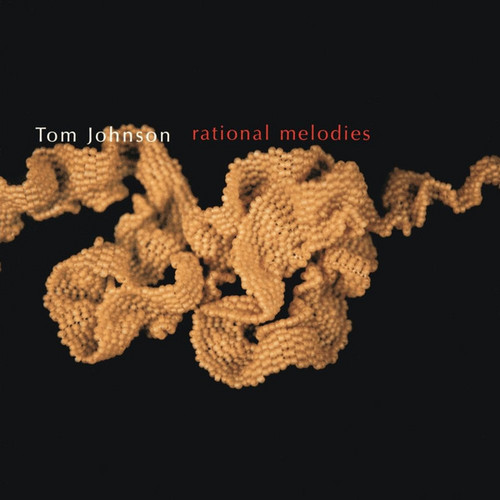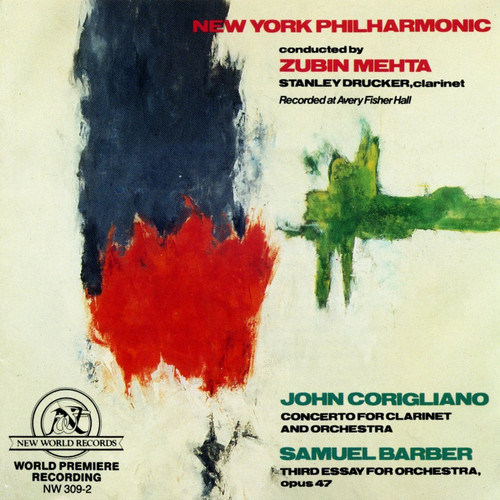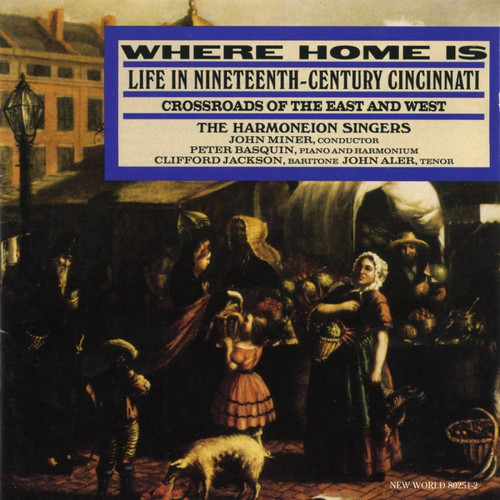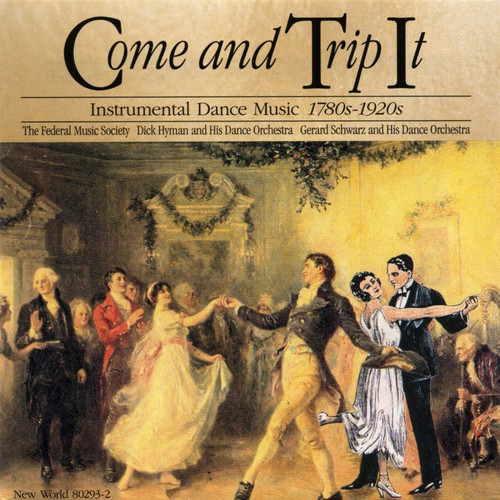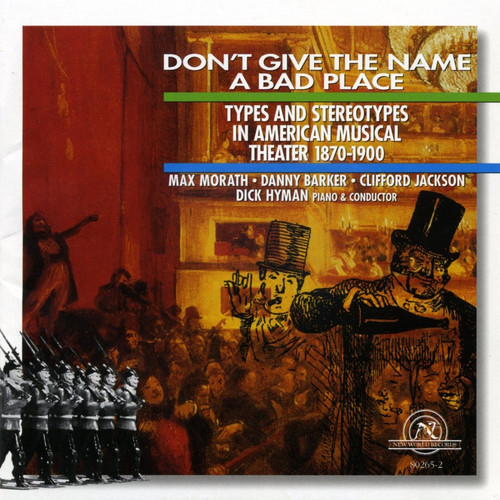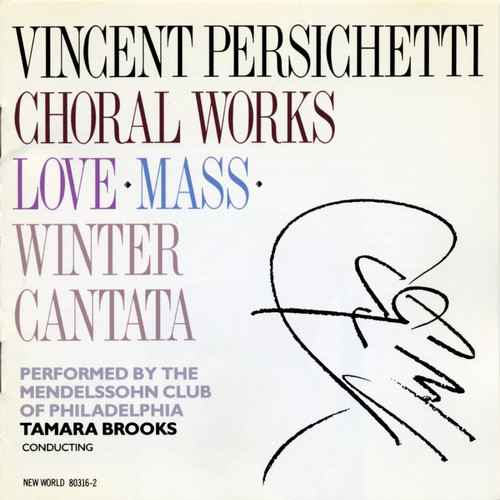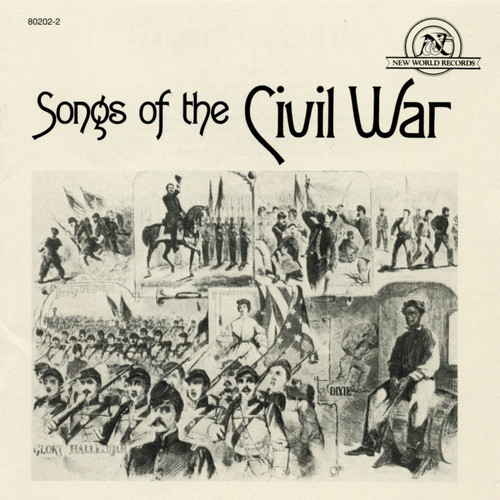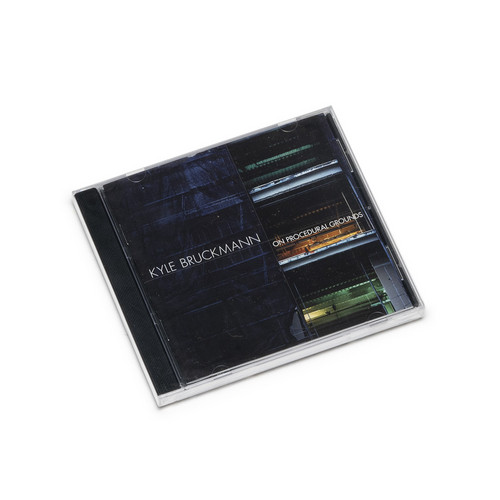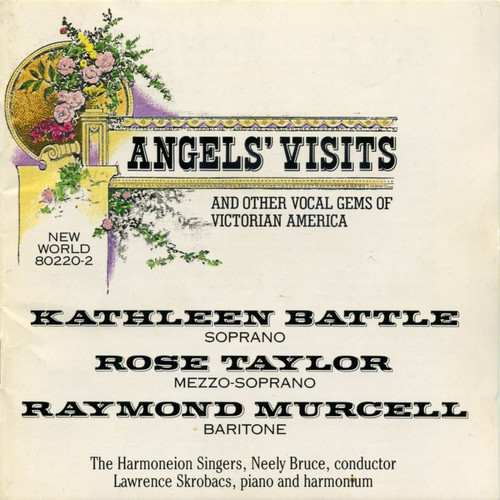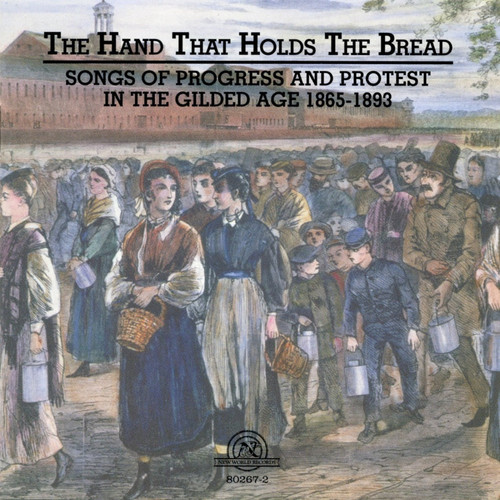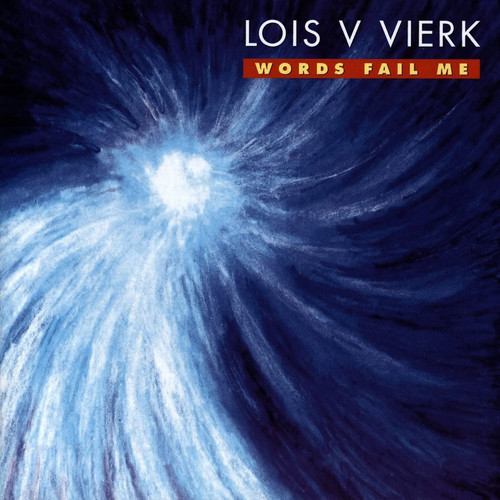Search (1 labels)
One Line Two Views
One Line, Two Views features seven compositions for nine-piece
ensemble by Muhal Richard Abrams. Works range from the subtle textural
and tonal explorations of “Textures,” “Hydepth,” and the title track to
the hard bop revisitations of “11 over 4”…
Scenes from Cavafy: Music for Gamelan
Lou Harrison’s (1917–2003) long-term love affair with the Indonesian gamelan had its roots in a course he took from Henry Cowell in the spring of 1935. As Harrison refined his understanding of traditional gamelan procedures during the 1980s, he be…
And the Butterflies Begin to Sing
Both works on this disc share the trademarks of his unique style: the relentless, pounding motoric energy that merges, sometimes with startling suddenness, into a dreamlike texture that seems to float, the continual sense of something magical occurri…
The viola in my life
"The music on this recording illustrates the essential integrity of the work of Morton Feldman (1926-1987) and one of its fundamental strengths -- its continuously unfolding unanimity of purpose. There are few composers of his generation whose first …
Film Music
Ussachevsky was one of the most significant pioneers in the compositon of electronic music, and one of its most potent forces. He produced the first works of “tape music,” a uniquely American synthesis of the French musique-concrète and the German pu…
Choral music of
Choral Music of Morton Feldman and Stefan Wolpe
Stefan Wolpe (1902-1972), one of the great teachers in
twentieth century music, is also now recognized as one of its most
significant composers. His Two Chinese Epitaphs, composed in
Jerusalem in 193…
1978-1983
John Bischoff, Jim Horton, Tim Perkis, David Behrman, Paul DeMarinis, Rich Gold. 'The League of Automatic Music Composers was a band-collective of electronic music experimentalists active in the San Francisco Bay Area between 1977 and 1983. Widely re…
Superior Seven / Tract
“I am finally able to say that I write for orchestra— even if I have to make the orchestra myself.” — Robert Ashley Robert Ashley is known primarily for his theater-based pieces and television operas. This new release presents the world premiere reco…
Robert Ashley
Compositions performed by Barbara Held (flute), Thomas Buckner (voice), MIDI Orchestra. Robert Ashley is known primarily for his theater-based pieces and television operas. This new release presents the world premiere recordings of two of his “orches…
Still
James Romig (b 1971) endeavors to create music that reflects the intricate complexity of the natural world, where fundamental structures exert influence on both small-scale iteration and large-scale design, obscuring boundaries between form and conte…
Antigone-Legend / Jefferson
Carol Plantamura and Frederic Rzewski met in 1965 when they were both at the Center for the Creative and Performing Arts at the State University of New York (SUNY), Buffalo. After beginning to work together in 1966, they collaborated in Rome as membe…
Terry Riley
Uncle Jard (1998) (saxophone quartet, piano, harpsichord, and voice) is a particularly compelling example of this. In this piece, Indian classical music and blues/jazz elements co-exist in a stylistically coherent whole: ragtime and raga have never b…
ShamanSong
Composer/performer Joan La Barbara (b 1947) has been an influential figure in experimental music since the early 1970s. She has devoted her career to the exploration of the human voice as a multi-faceted instrument. Going far beyond traditional bound…
Schtyx
"All his life, my father played the trombone and sang; just before he died, he became a music critic. He said "Chords, yes Alvin, but it needs more melody." SCHTYX was the answer. It opens with a dotted quarter at 50. From the start, implications app…
James Tenney: Selected Works 1961- 1969
This recording is a reissue of the 1992 Frog Peak/Artifact CD, the first recorded collection of James Tenney’s music of the 1960s. Many of the pieces on this CD were realized at Bell Telephone Laboratories from 1961 to 1969, where Tenney used Max Mat…
Spectral Malsconcities
The evolution of the string quartet repertory has accelerated during the last half of the twentieth-century and beyond as composers from both the mainstream and the avant-garde have mined its seemingly inexhaustible creative resources. This CD featur…
September Canons
Todd Reynolds, violin, with electronic processing; Members of the Yale Philharmonia, Julian Pellicano, conductor; The Berkeley Gamelan, Daniel Schmidt, director; Ingram Marshall, gambuh (Balinese flute), Serge synthesizer, live electronic processing
…
AnnCela Express
If you ask a random group of people familiar with contemporary classical music to categorize the style or type of music that Daniel Goode (b. 1936) creates, you would probably receive as many answers as the number of people in that grouping: minimali…
Vespers and Other Early Works
Alvin Lucier is best known for his pioneering work in the mid-sixties in the exploration of sonic environments, particularly sounds that we would never perceive under ordinary circumstances. Vespers and Other Early Works restores to the catalog sever…
Six Seasons
Tip! "A cycle of six movements and a coda, Six Seasons is as protean as the ocean waters that serve as its substance and underlying metaphor. In creating a space of many spaces and multiple temporalities, Lei Liang (b. 1972) resides in select company…
From Japan
Robert Carl (b 1954) has long been interested in Japanese music and culture, and in the spring of 2007 he received a grant from the Asian Cultural Council to travel to Japan to interview Japanese composers between the ages of thirty and sixty—his con…
Rewild
Inspired by the perspectives and timescales of nonhuman beings and distant orders of magnitude in the universe of life, Rewild seeks new strata in musical parameters, exploring the uncanny zones at which pitch becomes rhythm, harmonic interval become…
Cecil Taylor Unit
This record presents further evidence of Cecil Taylor’s genius and awesome ability to work within the group context, in which he furthers his exploration of the piano “as catalyst feeding material to soloists in all registers.” This music at times ge…
The Harry Partch Collection, Volume 1
This newly remastered reissue marks a welcome return to the catalog of the first volume of the classic 4-CD collection that was formerly available on the CRI label. The works recorded on this disc span the first six years of what Harry Partch (1901–1…
Desolation Pops
"James Moore (b. 1979) is a composer with an eye toward the world of games and experimental theater. He’s an electric guitarist who’s willing and eager to treat his instrument as a playground, not a reverent, static tradition. He’s a tinkerer, a char…
Ending(s)
While certain recognizable fingerprints are found throughout the body of Daniel Lentz's (b. 1942) work, he has never been content to settle within one particular style or mode of music for long, moving ever forward in an evolutional continuum, an ove…
Lejaren Hiller: A Total Matrix of Possibilities
Lejaren Hiller (1924-1994) was a musically eclectic composer, often combining several different types of techniques in the same piece. In the mid-sixties, he asserted that his "objective in composing music by means of computer programming is not t…
'Waves breaking on rocks
Peter Garland (b. 1952) studied with Harold Budd and James Tenney at Cal Arts and had long student-mentor friendships with Lou Harrison, Conlon Nancarrow, Paul Bowles and Dane Rudhyar. Like Harrison, Garland has forged his own musical vocabulary as a…
Hyo- shin Na: All the Noises
Ocean/Shore 2 (2003) is one of a series that are studies on the use of diverse materials and on the coexistence, within a piece of music, of various instruments. As in the meeting and interaction of water and land, these instruments can have fundamen…
One Line, Two Views
One Line, Two Views features seven compositions for nine-piece ensemble by Muhal Richard Abrams. Works range from the subtle textural and tonal explorations of "Textures," "Hydepth," and the title track to the hard bop revisitations of "11 over …
New Music for Four Guitars
*2022 stock* An amazing collection of works by Loris Chobanian (Sonics), Walter Hartley (Quartet forGuitars), Lejaren Hiller (Metaphors), William Ortiz (Abrazo),Stephen Funk Pearson (Mummychogs (Le Monde)) and James Piorkowski (The Struggle of Jacob)…
Dreamers of Pearl
Joseph Kubera, piano. Michael Byron (b. 1953) was a pupil of James Tenney, and later, of Richard Teitelbaum. The body of music he has composed over the past thirty years has been harmonically rich, rhythmically detailed, and increasingly virtuosic. D…
Dialogues and Contrasts / Colloquy
The title Dialogues and Contrasts describes the nature of the exchange which takes place between the performer and the materials committed to tape. In the first movement the exchange is more in the nature of an argument. Though initially each side ap…
Five Works For Voices, Instruments, And Electronics
Kenneth Gaburo (1926–1993) composed works for instruments, voices, electronics, multi-media, theater, and a variety of other resources. Foremost among his many interests was a concern with the voice and with language—how we shape language and how we …
O, O, O, O, That Shakespeherian Rag
O,O,O,O, That Shakespeherian Rag collects six of the most important compositions from his relatively small body of work. By the late 50s Martirano had begun to freely incorporate elements of jazz and popular music. O,O,O,O, That Shakespeherian Rag(19…
Works for String Quartet and Percussion
"The evolution of the string quartet repertory has accelerated during the last half of the twentieth-century and beyond as composers from both the mainstream and the avant-garde have mined its seemingly inexhaustible creative resources. This CD featu…
When Lilacs Last In The Dooryard Bloom'd
Of the numerous settings of Walt Whitmans poetry, and this poem in particular, Sessions's is generally agreed to be one of the very finest and most sensitive. His mature style - a highly personal, instantly recognizable mix of severity and control w…
Music for Woodwinds
Through her novel approaches to texture and melody, German-American composer Johanna Magdalena Beyer (1888–1944) became one of the most distinctive modernist voices of the mid-20th century. Beyer was the first woman known to have composed for electri…
Michael Pisaro-Liu: Radiolarians
Radiolorians (2018) finds Pisaro-Liu drawing inspiration from another gifted observer of this world-in-variation, the German zoologist, naturalist, and philosopher Ernst Haeckel (1834–1919), who promoted and popularized evolutionary thought via exten…
Sound Forms for Piano: Cage/ Cowell/ Johnston/ Nancarrow
“... in the past, the point of disagreement has been between dissonance and consonance, it will be, in the immediate future, between noise and so-called musical sounds.” — John Cage The most characteristic features of American music are its eclectic…
Granular Modality
In many respects Earl Howard’s (b. 1951) music is an anomaly that resists categorization and the seductiveness of genre. He is an important force in improvised music and yet his work employs complex structures and rigorous transitions of sound and te…
The Light That Is Felt - Songs of Charles Ives
Charles Ives composed nearly 200 songs throughout his life. Wiley Hitchcock, in the thorough introduction to his 2004 critical edition 129 Songs, described the Ives song canon as the contents of a kind of scrapbook or commonplace book or chapbook, or…
The Birthday Party
On first hearing, the piano music of Peter Garland (b. 1952) creates a feeling of dislocation, then astonishment: It is so very different from the contemporary concert music we are familiar with. The composer's intent, his emotional directness is imm…
Music of the Federal Era
Music of the Federal Era is an excellent overview of late 18th and early 19th century compositions by Benjamin Carr, Oliver Shaw, Raynor Taylor and others, performed on period instruments. The variety of styles represented on this disc reflects two k…
A Retrospective (1977-2009)
The music on this disc was written over a period of more than thirty years. Over the course of those years, so much has changed in technology, in music, in life in general. But throughout the work represented here one can recognize the remarkable, e…
Songs of Love, Luck, Animals, & Magic
In aboriginal times the coastal Indians of Northern California shared a tremendous wealth of food, clothing, and material goods. From Trinidad, California, to the Oregon border, the forests almost touch the Pacific Ocean, which gave the people the bo…
Mass/Seven Pious Pieces
This collection of two tonal works by composers known for their non-tonal compositional style is a fine example of contemporary approaches to sacred choral music. Salvatore Martirano’s Mass is a setting of a traditional Latin Mass whilst Donald Marti…
Rational Melodies
I am particularly pleased, because the result is so different from the solo flute recording of Eberhard Blum and the solo clarinet recording of Roger Heaton. It is not just another interpretation, but a case where interpreters have added so much i…
Concerto For Clarinet And Orchestra / Third Essay For Orchestra, Opus 47
The Third Essay was Samuel Barber's last completed work and its drama and lyricism are entirely characteristic of the neo-Romantic style he composed in for his entire life, a style which won him a large and faithful audience. In his avowed concern f…
Where Home Is: Life In Nineteenth-Century Cincinnati/Crossroads Of The East And West
Life in 19th-Century Cincinnati
The Harmoneion Singers; John Miner, conductor; Peter Basquin, piano and harmonium; Clifford Jackson, baritone; John Aler, tenor
Where Home Is is an anthology of traditional songs of family and religious life coupled …
Come and Trip It-Instrumental Dance Music: 1780s to 1920s
This recording demonstrates some of the major developments in American social dancing and its music from after the Revolution up to the beginning of electrical recording in the mid-1920s. Dances such as the waltz, polka, tango, quadrille, charleston,…
We, Like Salangan Swallows...: A Choral Gallery of Morton Feldma
The intense individuality of Morton Feldman's (1926?1987) art and its 'painterly' aspect have tended to push his rich output of works into a zone all of their own, surrounded by a moat of stillness. This recording attempts the reverse process -- to b…
Don't Give The Name A Bad Place (Types And Stereotypes In American Musical Theater 1870-1900)
In this time of charged debate about immigration and the concomitant stereotyping of minorities, this collection of fourteen songs drawn from musicals and minstrel shows reminds us that the habit of stereotyping has been with us longer than we care t…
Winter Cantata, Other Works
Vincent Persichetti's choral music plays an important part role in his output. In many ways his Mass is an orthodox a cappella Mass, its Renaissance heritage reflected in its use of a Gregorian chant as the unifying theme, and in its reliance on imit…
Songs of the Civil War
The Civil War, one of the most deeply felt episodes in America's history, has left a heritage of music that reflects those feelings in the most vivid way. Indeed, this music was so intimately involved with events of the time that it became part of th…
On Procedural Grounds
n his compositions, composer/performer Kyle Bruckmann seeks to integrate rigor and internal logic with raw immediacy while fully engaging his fellow performers as not simply dutiful interpreters, but creatively invested collaborators. Aestheticall…
Kathleen Battle, Raymond Murcell, Rose Taylor, The Harmoneion Singers, Neely Bruce, Lawrence Skrobacs
Angels' Visits (And Other Vocal Gems Of Victorian America)This recording is a collection of American songs and hymns published mostly during the 1860s and 1870s that deal generally with angels, heaven, and death. Considering the rather morbid subject matter of these songs, they are surprisingly pleasant and…
The Hand That Holds The Bread
Songs of Progress and Protest in the Gilded Age 1865-1893
The Hand That Holds The Bread provides a window onto a particularly turbulent time (1865-1893) in this nation's history-a period of great economic disparity, surging immigration, and rampant …
Words Fail Me
The majestic beauty and savage turbulence that one often beholds while witnessing an awesome act of nature is also evident in Lois V Vierk's vigorous and delicate music. In her meticulously wrought works, she enfolds the rapture of opulent expressio…
